Can I Add Video Feeds to My Parked Domain Names
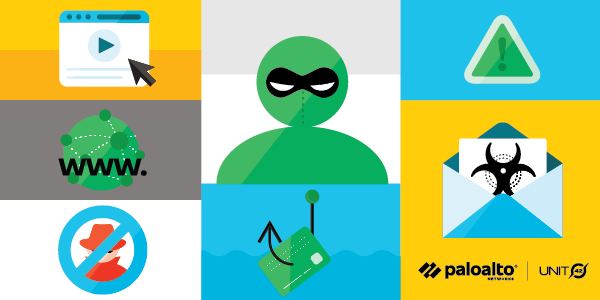
This post is also available in: 日本語 (Japanese)
Executive Summary
Domain parking services offer a simple solution for domain owners to monetize their sites' traffic through third-party advertisements. While domain parking might appear harmless at first glance, parked domains pose significant threats, as they can redirect visitors to malicious or unwanted landing pages or turn entirely malicious at any point in time.
We have been detecting parked domains for more than nine years. From March to September 2020, we identified 5 million newly parked domains. In the same time frame, we observed that 6 million parked domains have transitioned to other categories. Out of the transitioned parked domains, 1.0% changed to malicious categories (such as phishing or malware); 2.6% changed to not safe for work categories (such as adult or gambling); and 30.6% changed to suspicious categories (such as questionable or high Risk). Compared to a benign domain (such as computer and internet info or shopping), a parked domain has an eight times higher probability of changing its category to one of the above non-benign categories.
In this blog, we further investigate the domain parking ecosystem and outline different types of abuse, including:
- Domain registration abuse: We observed the malicious life cycle of the domain valleymedicalandsurgicalclinic[.]com, which is no longer active, as part of a global Emotet campaign. Emotet is one of the most popular malware families distributed via phishing emails. During this campaign, Palo Alto Networks observed attacks against organizations in various industries (such as education, government, energy, manufacturing, construction and telecommunications) all over the world, including the United States, the United Kingdom, France, Japan, Korea and Italy. The attack targeting French organizations also exploited the COVID-19 global pandemic: It used Covid19 as the phishing email's subject line. None of these attacks were successful.
- Advertisement abuse (case 1): We observed attackers abusing the domain peoplesvote[.]uk related to the current U.S. presidential election. While visiting peoplesvote[.]uk, users are presented with an ad listing page most of the time. However, occasionally, users are first redirected to 0redira[.]com/jr.php, which hosts an exploit kit script, and subsequently users are redirected to a survey website asking about users' voting preference of Joe Biden or Donald Trump. The exploit kit script hosted on 0redira[.]com/jr.php fingerprints the browser silently to track users' web activity and hides the landing URLs to prevent security companies and researchers from analyzing and blocking them. Of note, these pages are still active as of this writing.
- Advertisement abuse (case 2): Furthermore, we observed a domain, xifinity[.]com, mimicking xfinity[.]com. When a user attempts to visit the Xfinity website but accidentally types an additional "i," they will go to xifinity[.]com and will be redirected to an abusive landing page, antivirus-protection[.]com-123[.]xyz. Both domains are active as of this writing. The landing page tries to fool users into believing that their machine is infected and that their McAfee subscription has expired. Clicking on the "Proceed" button will redirect users to a legitimate McAfee download page offering an antivirus subscription. We believe that attackers are abusing McAfee's affiliate program to steal ad revenue.
Security best practice for enterprises is to keep close track of parked domains, while consumers should make sure that they type domain names correctly and double-check that the domain owners are trusted before entering any site.
Palo Alto Networks Next-Generation Firewall customers can block the parked category with the URL Filtering and DNS Security subscriptions.
Domain Parking: Why and How
Individuals and enterprises need to pay registrars (ICANN accredited domain resellers) an annual fee to buy domain names and become domain owners. If domain owners don't have content or service ready to point their domains to, they can leverage parking services to monetize user traffic. Setting up a parking service is simple and only requires domain owners to point their name server (NS) records to the parking service. In return, parking services will either present visitors with a list of advertisements or automatically redirect users to advertisers' webpages. In the first case, domain owners and parking services get paid when a user clicks on an ad, while in the second case, they get paid per user visit. Some domain owners buy large amounts of domain names as an investment to resell them later for a profit or to monetize user traffic. As shown by previous research studies and this blog, parked domains can pose significant threats to end-users. Because of this, along with their questionable utility, it may be best to block parked domains.
Palo Alto Networks has deployed a comprehensive pipeline to track newly parked domains and to publish the detection results to URL Filtering. Recently, we have launched the parked category in DNS Security as well. In particular, our pipeline:
- Monitors known parked service providers and their infrastructure.
- Tracks domain registrations and passive DNS queries and performs reverse DNS lookups.
- Crawls website content.
- Employs machine learning to combine multiple features to classify whether a domain is parked.
High-Level Statistics
To analyze the current parked domain landscape, we collected the parked domains that were detected from March to September 2020, as well as the ones whose category changed from parked to other categories in the same time span. On average, we found that 27,000 newly parked domains were identified and 35,000 existing parked domains were re-classified daily. In summary, our pipeline has identified 5 million newly parked domains and re-classified 6 million parked domains to other categories in the past six months.
Figure 1 summarizes how we observed parked domains changing during this time period. For simplicity, we group the URL Filtering categories into four classes: malicious, not safe for work, suspicious and benign. The malicious class consists of malware, command and control (C2), phishing and grayware. Adult, gambling and nudity are represented in the not safe for work class. For suspicious, we include questionable, insufficient content and high risk domains. Sites are deemed questionable based on suspicious web content, while the insufficient content category is normally applied to a blank website and high risk means the domain displays behavior similar to malicious domains. The benign class encompasses all other categories, such as business and economy, computer and internet info and shopping. Figure 1 shows that for parked domains, the malicious change rate is 1.0%, the not safe for work change rate is 2.6% and the suspicious change rate is 30.6%. As a comparison, the non-benign change rate of the parked category is eight times higher than the non-benign change rate of benign categories.
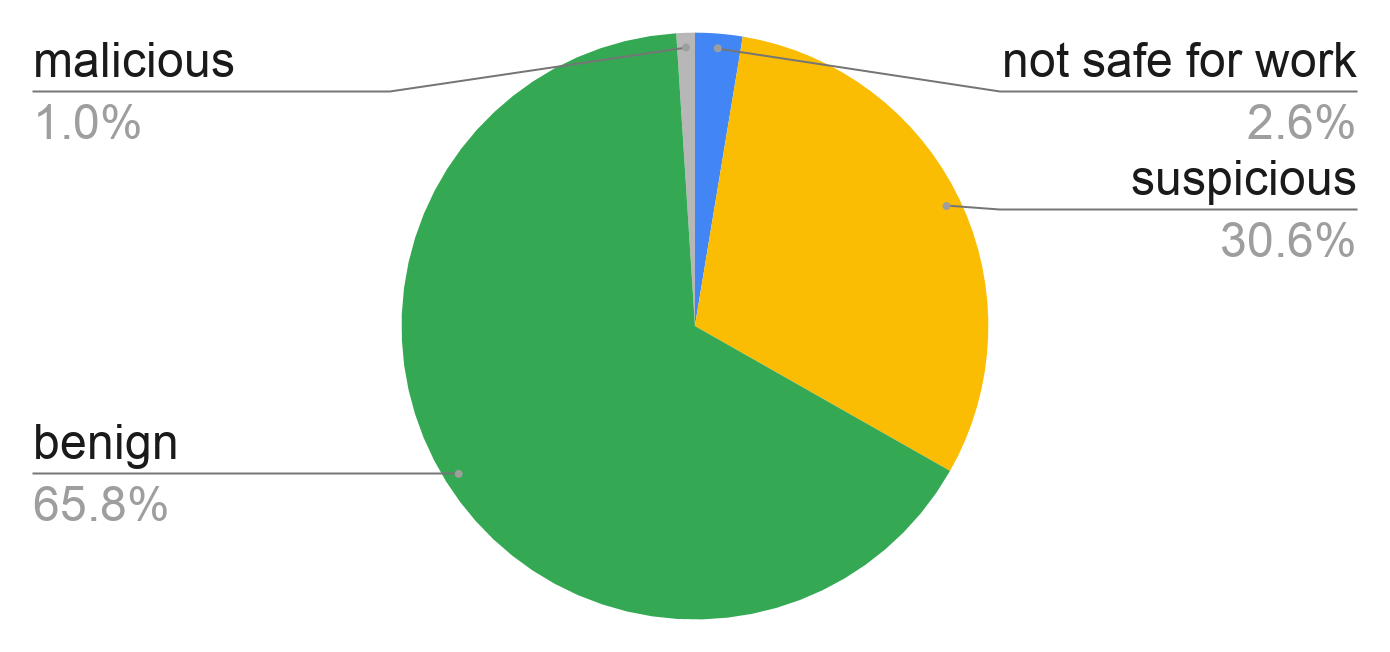
Figure 2 presents the distribution of the number of days that domains that we ultimately categorize as malicious and benign are parked before changing their category. We aggregate the number of category changes from parked for every 10 parked days and normalize by the total number of domains per class. Figure 2 shows that over 25.9% of parked domains that changed to malicious categories are parked for less than 10 days, which is significantly different from benign, where the majority of them are parked for around 60-69 days. We conjecture that many cybercriminals do not age their domains (a practice used to evade domain lifetime-based detection features) and use them to conduct attacks as soon as possible.

The Ecosystem and Attack Vectors
In this section, we further investigate the benefits of detecting and blocking parked domains. We begin by dissecting the domain parking ecosystem into different stakeholder groups. We then show that the largest attack vector is domain registration, since attackers can register parked domains and turn them malicious at any time. Second, we show that attackers can abuse the lack of advertisement control by some smaller advertisement networks used by parking services, thereby redirecting visitors to malicious or unwanted landing pages. Last, we show that even a parking service itself can pose privacy threats to users.
Stakeholders
We show the major stakeholder groups in the domain parking ecosystem and their relationships in Figure 3, namely domain owners, parking service providers, advertisement networks and advertisers. Note that the term stakeholders as used here represents roles and can refer to the same entity or multiple entities. Domain owners own parked domains and have the incentive to monetize through parking service providers. Parking service providers incorporate and organize feeds from advertisement networks to monetize user traffic. Advertisement networks characterize user traffic from parked domains and present ads to users from interested advertisers.
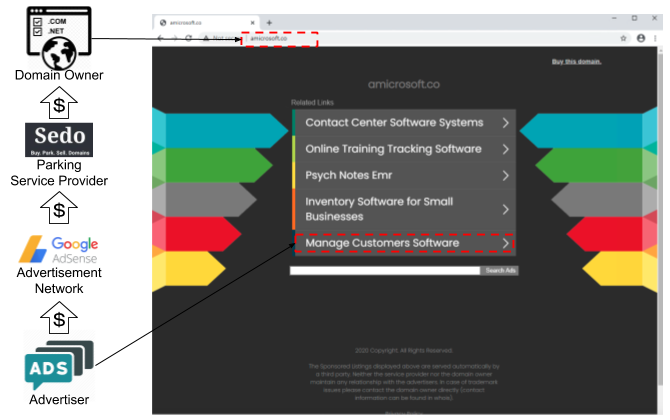
As mentioned previously, domain owners need to point their NS records to the parking service's name server to "park" their domains. We measured the popularity of service providers by checking the DNS NS records of parked domains detected from March to September 2020. Figure 4 presents the top 15 most popular NS domains. The majority of parked domains are resolved by the NS of large registrars, including GoDaddy (domaincontrol[.]com) and NameBright (namebrightdns[.]com). Besides the large registrars and hosting providers, we identified several dedicated parking service providers. The most popular dedicated provider is Sedo (sedoparking[.]com), which is used by 19.5% of parked domains.
![A list of domain parking service providers, sorted by popularity. Top providers are domaincontrol[.]com, sedoparking[.]com, namebrightdns[.]com, bodis[.]com and parking crew[.]net](https://unit42.paloaltonetworks.com/wp-content/uploads/2020/10/chart-2.png)
Domain Registration Abuse
Parked domains could present threats to users when they turn malicious. Figure 1 shows that 1.0% of parked domains eventually changed to malicious categories such as C2 and malware. Some attackers appear to host parked pages on their domains before deploying malicious content, potentially to amortize their costs.
For example, we observed the malicious life cycle of the domain valleymedicalandsurgicalclinic[.]com. This domain was registered on July 8, 2020. Our newly registered domain detector found this domain, and our parking detector pipeline classified it as parked based on the website content. Two months later, our malware analysis engine, WildFire, captured multiple malware instances, such as SHA256: a9fe73484674696be756808e93f839be7157cd65995d8de9e67e40bf77c9b229 and 54ac560845b09ce00a48b604ac7c440331cbde4362839a3dbf14c378230bee21 hosted on the URL valleymedicalandsurgicalclinic[.]com/ujftb/statement/wr7hoba7i9hz since Sept. 14, 2020. Furthermore, we discovered that it's part of a global Emotet campaign (refer to our recent Emotet blog for more information). Emotet is one of the most popular malware families distributed via phishing emails. The documents attached to the phishing emails contain macro scripts that call back to the C2 servers from victims' machines. Emotet further downloads Trojan payloads that steal victims' credential information or even compromises their machines. We can see many suspicious behaviors from these files, including incorrect file extensions and communication with multiple C2 servers, such as 50.91.114[.]38 and 51.38.124[.]206. We sketch the phases of the Emotet campaign in Figure 5.
The observed campaign was launched using multiple domains around the world. During this campaign, Palo Alto Networks observed attacks against organizations in various industries (such as education, government, energy, manufacturing, construction and telecommunications) all over the world, including the United States, the United Kingdom, France, Japan, Korea and Italy. The attack targeting French organizations also exploited the COVID-19 global pandemic: It used Covid19 as the phishing email's subject line (refer to our COVID-19 scams blog for similar cases). None of the attacks were successful.
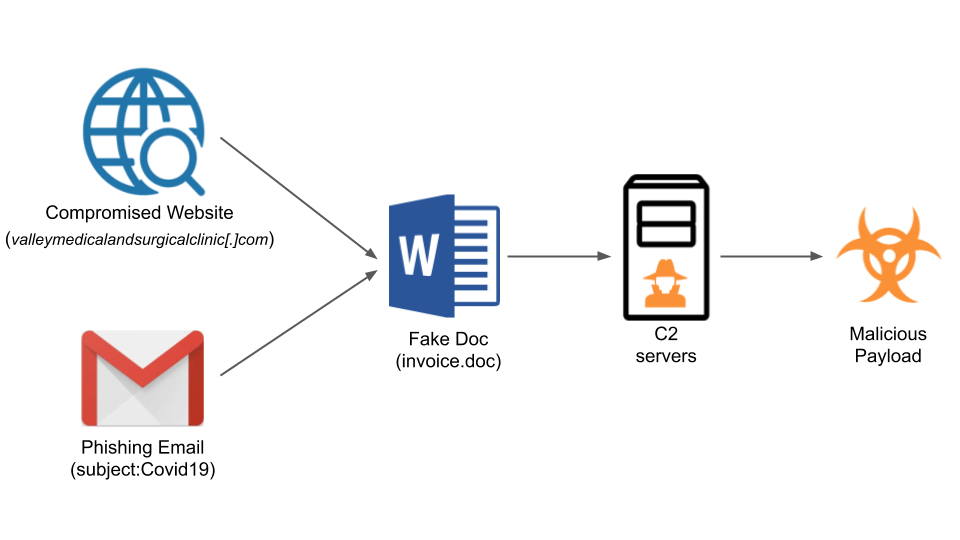
Advertisement Abuse
The domain parking ecosystem depends on advertisers to profit from user traffic. As discussed earlier, parking services either show users a list of ads (and get paid based on the number of user clicks on these ads) or redirect users automatically to the advertisers' webpages (and get paid based on the number of user visits). Often the parking services and the advertisement networks do not have the means or willingness to filter abusive advertisers (i.e. attackers). Therefore, users are exposed to various threats, such as malware distribution, potentially unwanted program (PUP) distribution and phishing scams. In our experience, we most frequently observe the distribution of grayware.
We observed attackers abusing the domain peoplesvote[.]uk related to the current U.S. presidential election, which was allowed by the lack of control by above[.]com , the seventh-most popular domain parking service, as shown in Figure 4. While visiting peoplesvote[.]uk, users are presented with an ad listing page most of the time, as shown in Figure 6. However, occasionally, users are first redirected to 0redira[.]com/jr.php , which hosts an exploit kit script, and subsequently redirected to a survey website asking about users' voting preference, as shown in Figure 7. The exploit kit script hosted on 0redira[.]com/jr.php fingerprints the browser silently to track users' web activity and hides the landing URLs. Of note, these pages are still active as of this writing.
![This shows how peoplesvote[.]uk often appears – a parked domain with ad listings.](https://unit42.paloaltonetworks.com/wp-content/uploads/2020/10/word-image-40.png)
![This shows what sometimes occurs after visiting peoplesvote[.]uk - a voting preference landing page.](https://unit42.paloaltonetworks.com/wp-content/uploads/2020/10/word-image-41.png)
Furthermore, we observed attackers abusing the largest dedicated parking service provider, Sedo. We found a parked domain, xifinity[.]com, that is a typosquatting domain mimicking xfinity[.]com (refer to our cybersquatting blog or this academic paper for more information). When a user attempts to visit the Xfinity website but accidentally types an additional "i," they will go to xifinity[.]com and will be redirected to an advertiser page. We identified that the traffic to this domain is sold to multiple advertisers. One of the advertisers, softonic[.]com, presents users with a software download page.
Besides legitimate advertisers, we also captured multiple redirections to PUPs from attackers. Figure 8 shows one of the abusive landing pages, the level-squatting domain antivirus-protection[.]com-123[.]xyz. The landing page tries to trick users into believing that their machine is infected and that their McAfee subscription has expired. Clicking on the "Proceed" button will redirect users to a legitimate McAfee download page offering an antivirus subscription. We believe that attackers are abusing McAfee's affiliate program to steal ad revenue.
As a squatting domain, xifinity[.]com receives a high visit volume compared to other parked domains. We observed over 1,000 DNS requests for xifinity[.]com in our passive DNS dataset from June to September 2020, and the domain is still active as of this writing – as is antivirus-protection[.]com-123[.]xyz. From a domain owner's perspective, using a parking service is a convenient way to monetize user traffic. However, as abusive advertisers (i.e. attackers) are not filtered, users are exposed to various threats.
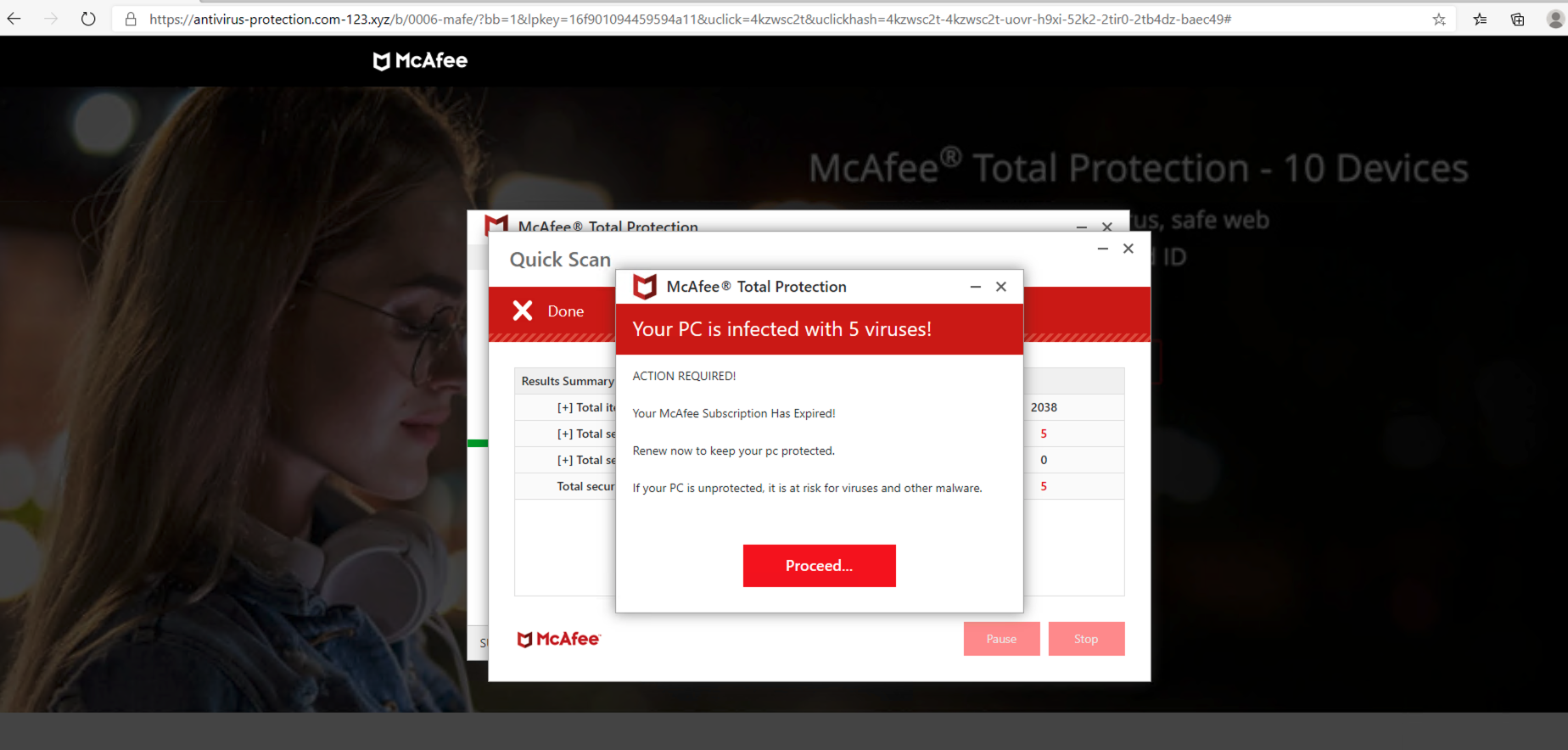
Parking Service Abuse
We observed several parked pages using ztomy[.]com, the 14th-most popular parking service provider (shown in Figure 4), harvesting visitors' personal information. We observed that these pages generate fingerprints of users' browsers and send them back to the parked domain. The parked pages are using the browser fingerprinting script from pxlgnpgecom-a.akamaihd[.]net/javascripts/browserfp.min.js, which collects various private information and tracks user behavior. These browser fingerprints could be leveraged to track visitors' online activities, allowing advertisement networks to target visitors with ads tailored to them. Additionally, domain owners complained online that their domains' NS records were configured to ztomy NS servers without their awareness, which could be considered a form of domain hijacking.
![This screenshot shows how bridgeplatform[.]biz appears with ads from domain parking service provider ztomy[.]com](https://unit42.paloaltonetworks.com/wp-content/uploads/2020/10/word-image-43.png)
Conclusion
In summary, parked domains can expose users to threats as they can redirect visitors to malicious or unwanted landing pages or turn entirely malicious in the future. Due to their questionable utility and the fact that our system can quickly re-classify parked domains when they merit new categories, we suggest that Palo Alto Networks Next-Generation Firewall customers block the parked category with URL Filtering or DNS Security. While this may be deemed a bit overly cautious by some due to potential false positives, we suggest alerts be set up for additional visibility at the bare minimum.
Palo Alto Networks Next-Generation Firewall customers are protected against malicious indicators (domain, IP, URL, SHA256) mentioned in this blog via URL Filtering, DNS Security and Threat Prevention subscription services.
Acknowledgements
We would like to thank Wei Wang and Ryan Nangong for their help with providing some of the data sources necessary for our analysis. We would also like to extend our gratitude to Jimmy Chen and Jun Javier Wang for their advice and help with improving the blog.
IOCs
Emotet campaign:
valleymedicalandsurgicalclinic[.]com
valleymedicalandsurgicalclinic[.]com/ujftb/statement/wr7hoba7i9hz
a9fe73484674696be756808e93f839be7157cd65995d8de9e67e40bf77c9b229 54ac560845b09ce00a48b604ac7c440331cbde4362839a3dbf14c378230bee21
50.91.114[.]38
51.38.124[.]206
Fingerprinting:
0redira[.]com/jr.php
bridgeplatform[.]biz
peoplesvote[.]uk
Cybersquatting:
xifinity[.]com
antivirus-protection[.]com-123[.]xyz
Get updates from
Palo Alto
Networks!
Sign up to receive the latest news, cyber threat intelligence and research from us
Source: https://unit42.paloaltonetworks.com/domain-parking/
Post a Comment for "Can I Add Video Feeds to My Parked Domain Names"